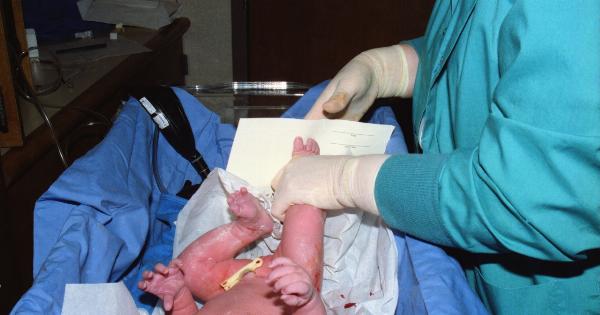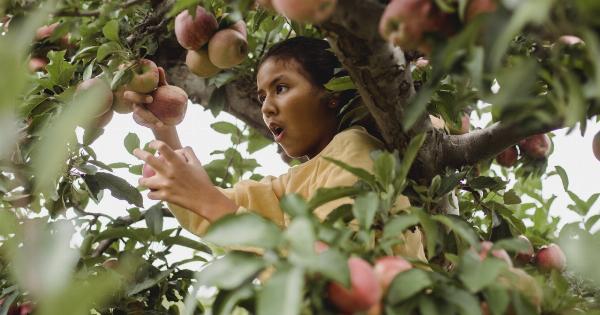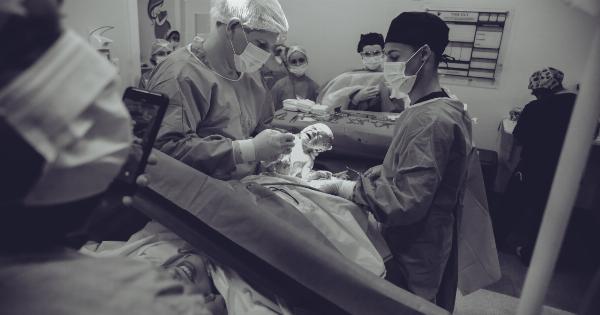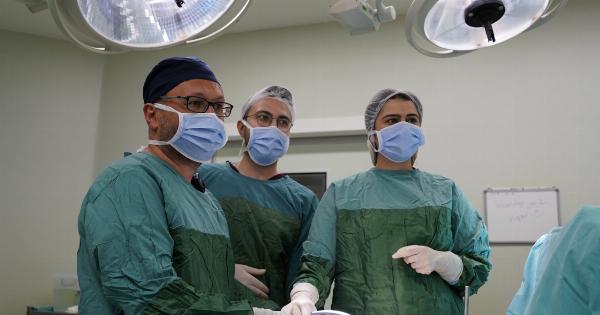When it comes to the development of an infant’s gut microbiota, the mode of delivery plays a crucial role.
Infants born through Caesarean section (C-section) have been found to have a distinct composition of intestinal microbiota compared to those born through vaginal delivery. In this article, we will explore the characteristics of the intestinal microbiota in infants born via C-section and discuss the potential implications for their health and well-being.
What is Intestinal Microbiota?
Intestinal microbiota, also known as gut flora, refers to the trillions of microorganisms that inhabit the human gastrointestinal tract. These microorganisms include bacteria, fungi, viruses, and protozoans.
They play a vital role in various physiological processes, such as digestion, metabolism, immune system development, and protection against pathogens.
How Does Delivery Mode Influence Intestinal Microbiota?
The mode of delivery is a major determinant of the initial microbial colonization of an infant’s gut.
During vaginal delivery, the infant is exposed to a diverse array of microorganisms from the mother’s birth canal, including beneficial bacteria such as Bifidobacterium and Lactobacillus. These bacteria quickly establish a stable and diverse gut microbiota in the newborn.
In contrast, C-section delivery bypasses the birth canal, reducing the exposure of the infant to maternal microorganisms. Instead, the newborn is primarily exposed to bacteria from the hospital environment and the mother’s skin.
This alternative microbial colonization pattern results in a different composition and diversity of intestinal microbiota in infants born via C-section.
Characteristics of Intestinal Microbiota in Infants Born via C-Section
Studies have shown that infants born through C-section have a decreased abundance of Bifidobacterium and other beneficial bacteria in their gut compared to vaginally delivered infants.
This reduction in beneficial bacteria is accompanied by an increase in potentially pathogenic bacteria such as Enterococcus and Clostridium difficile.
Furthermore, the diversity of the intestinal microbiota in C-section-born infants tends to be lower compared to their vaginally born counterparts.
This lower diversity may have implications for the development of the immune system and overall health of the infant.
Factors Influencing Intestinal Microbiota Development in C-Section-Born Infants
Several factors contribute to the altered intestinal microbiota composition in infants born via C-section:.
1. Lack of Maternal Transmission
During vaginal delivery, the infant acquires the mother’s microbiota, which is known to have a positive impact on the development of a healthy gut microbial community.
In C-section births, this maternal transmission is significantly reduced, leading to a less diverse and potentially imbalanced gut microbiota.
2. Antibiotic Exposure
C-section deliveries often involve the use of antibiotics as a preventive measure against potential infections. While antibiotics are necessary in some cases, they can disrupt the natural microbial composition in the infant’s gut.
This disturbance may lead to the overgrowth of harmful bacteria and a decrease in beneficial ones.
3. Delayed Initiation of Breastfeeding
C-section deliveries sometimes result in delayed initiation of breastfeeding due to various reasons, such as recovery from surgery or complications.
Breast milk is a crucial source of beneficial bacteria, prebiotics, and immune factors that support the establishment of a healthy gut microbiota. The delayed initiation of breastfeeding in C-section-born infants may further contribute to the altered composition of their intestinal microbiota.
Implications for Health and Future Research
The composition and diversity of intestinal microbiota have significant implications for an infant’s health, both in the short and long term.
Altered microbiota in early life have been associated with an increased risk of developing conditions such as allergies, asthma, obesity, and autoimmune diseases later in life.
Further research is needed to understand the precise mechanisms by which C-section delivery influences the development of intestinal microbiota and its impact on the health of infants.
This knowledge can help guide interventions and strategies to promote a healthy gut microbiota in C-section-born infants, such as the administration of probiotics or personalized microbial therapies.
Conclusion
The mode of delivery plays a crucial role in shaping the intestinal microbiota of infants. C-section-born infants have a distinct composition and reduced diversity of gut microbiota compared to vaginally born infants.
The altered microbiota may have implications for the health and well-being of these infants. Further research is needed to fully understand the consequences of these differences and develop strategies to optimize their intestinal microbiota.






























